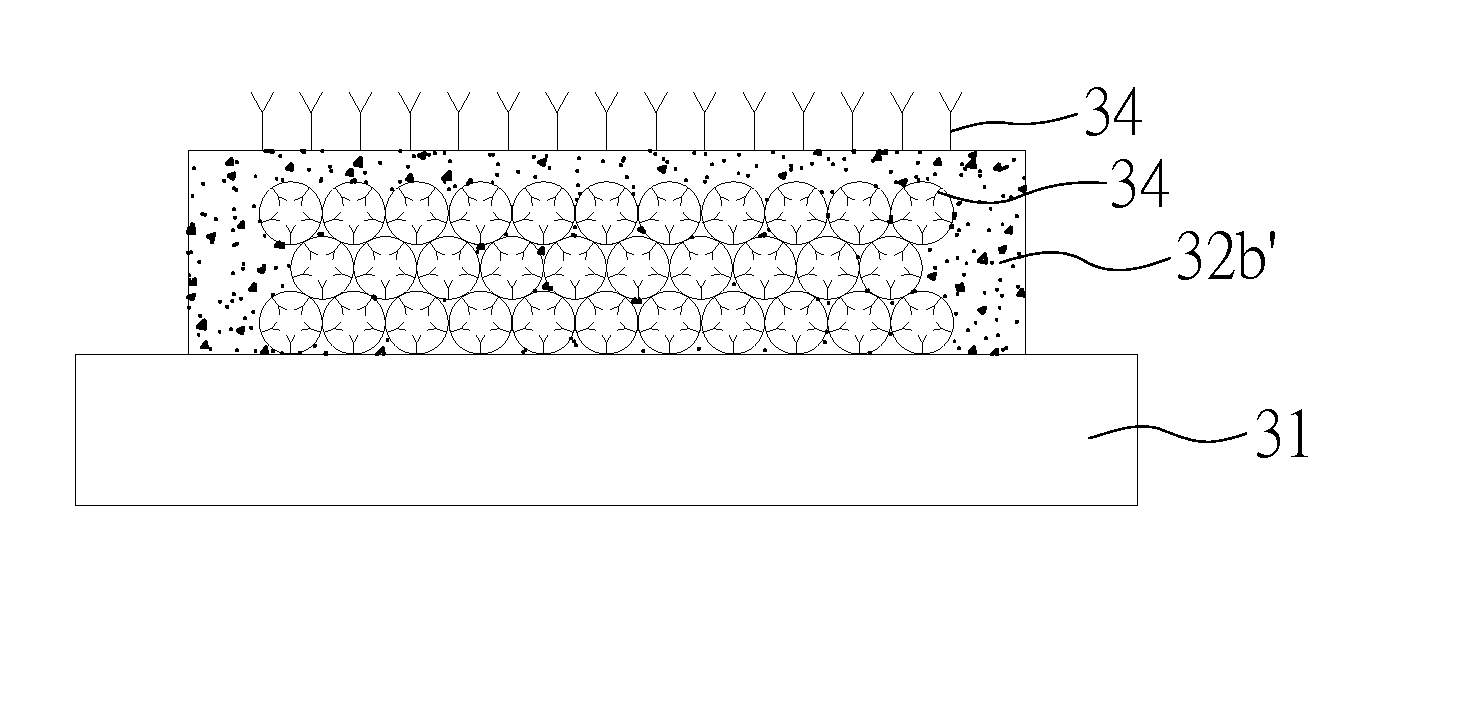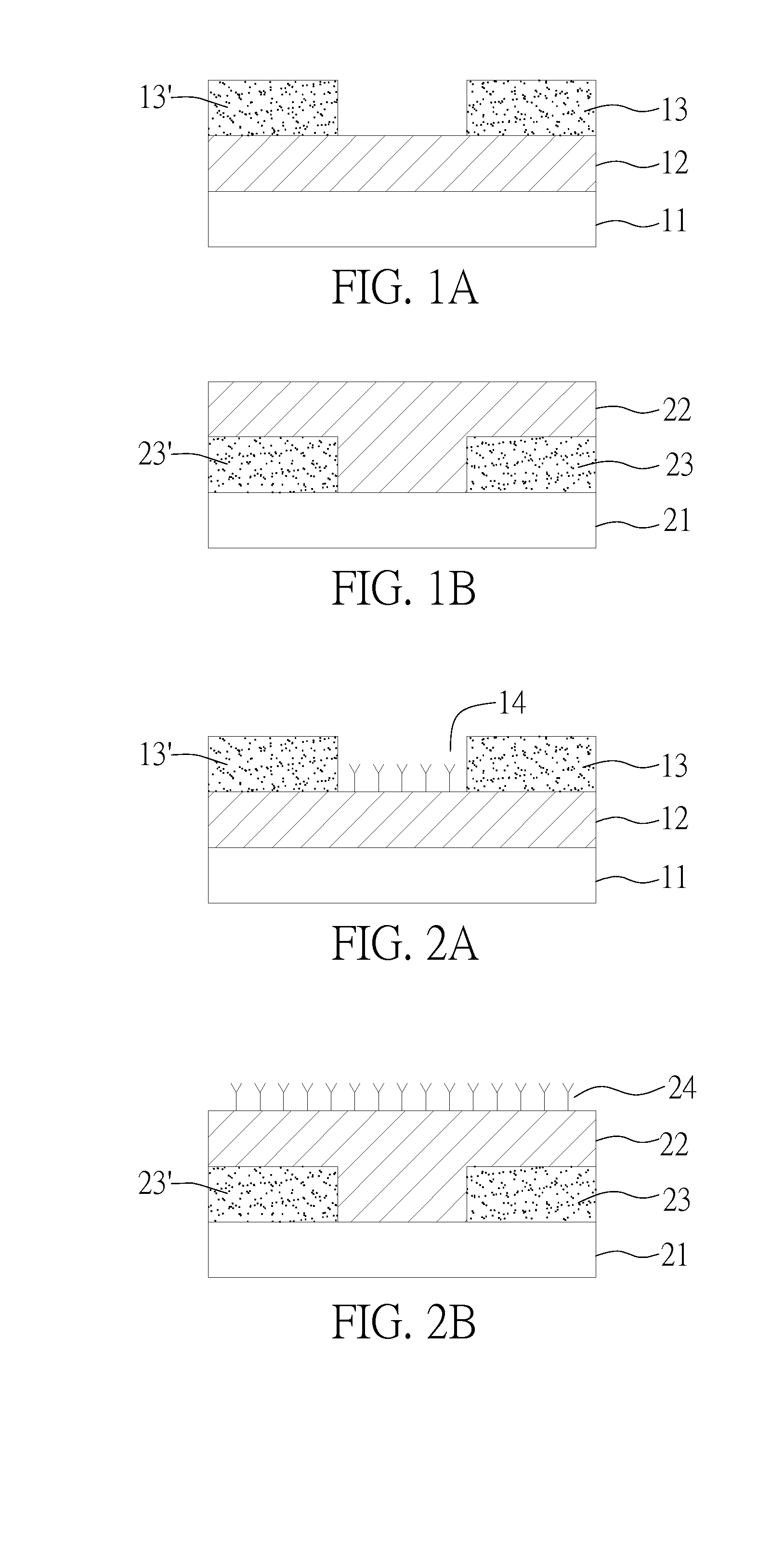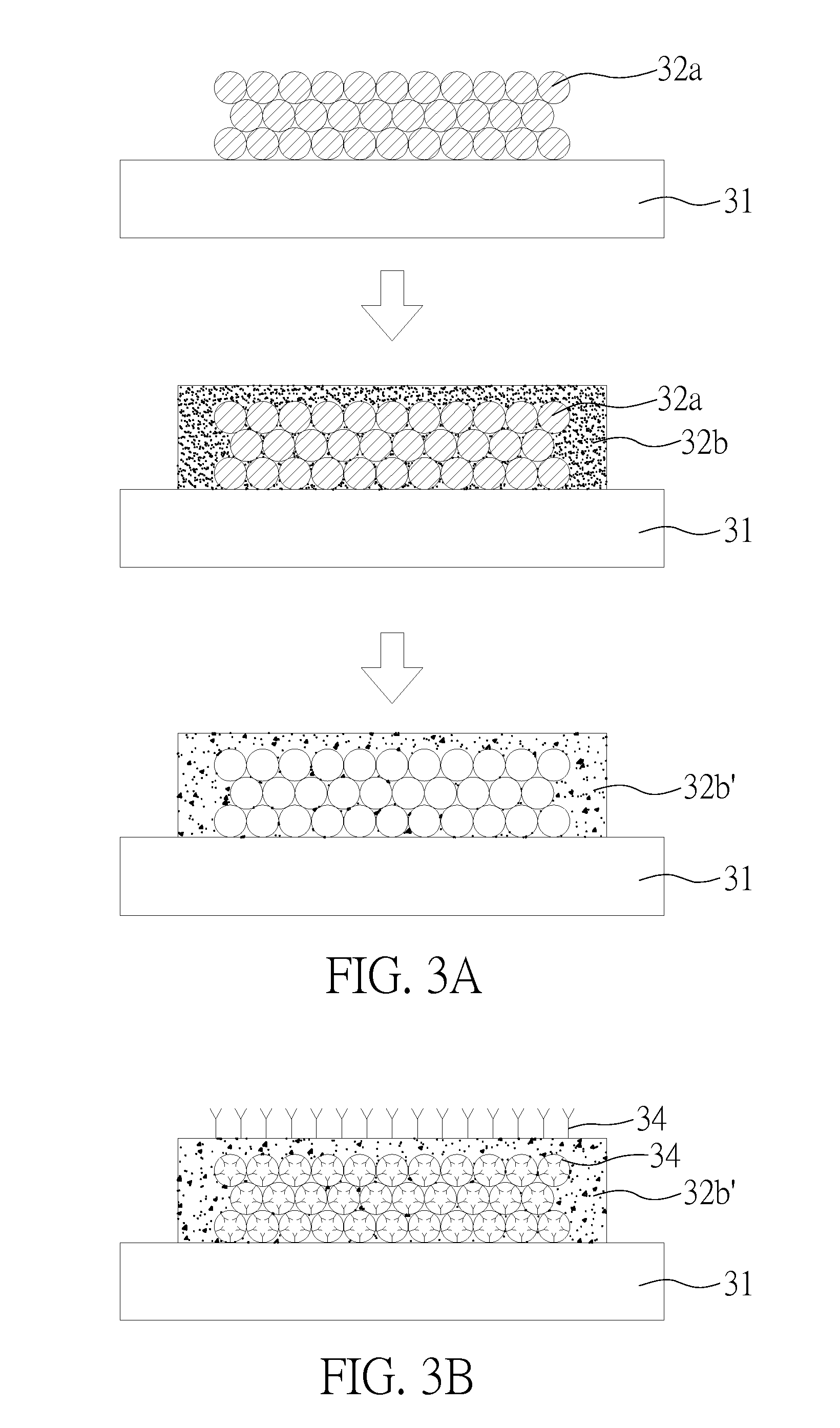Label-free sensor
- Summary
- Abstract
- Description
- Claims
- Application Information
AI Technical Summary
Benefits of technology
Problems solved by technology
Method used
Image
Examples
preparation example 1
FOR SEMICONDUCTOR DEVICE
[0043](1) Preparation of Metal-Oxide-Semiconductor (MOS) Device
[0044]A solvent such as 2-propanol or anhydrous ethanol is utilized to prepare a solution of zinc acetate (purchased from Sigma Aldrich company) with a concentration of 0.5M to 1.0M, and ethanolamine is then added thereinto, wherein the zinc acetate and the ethanolamine are in a molar ratio of 1:1 and this solution may be undoped or doped with aluminum nitrate and the zinc acetate with a molar ratio of 1:99 to 5:95. The zinc acetate solution (or called as zinc oxide precursor) is sprayed on a glass substrate by spin-on-glass method, and the solvent is then removed by baking at 200° C. Thereafter, a post-anneal treatment is performed in a furnace at a temperature range of 400 to 600° C. depending on the heat resistance of the substrate so as to form the zinc oxide semiconductor layer.
[0045]A metal electrode such as aluminum (Al) or titanium (Ti) is evaporated on the zinc oxide semiconductor layer b...
preparation example 2
FOR FUNCTIONALIZATION
[0059](1) Functionalization of Semiconductor by Hemin
[0060]A solvent such as dimethylsulfoxide (DMSO) is utilized to prepare a solution of hemin (purchased from Sigma Aldrich Company) with a concentration of 0.5M to 1.0M, and the semiconductor device of the preparation example 1 is dipped into the hemin solution for at least 5 to 60 minutes. Thereafter, the DMSO is utilized to clean the surface of the semiconductor device and remove the hemin, which is not bonded to the semiconductor device, for thereby obtaining a hemin-functionalized sensor device, which is adaptable for sensing the presence of nitric oxide (NO).
[0061](2) Functionalization of Semiconductor by Biotin
[0062]A phosphate buffer solution (PBS) with a pH of about 7.0 and a concentration of 0.01M is adopted as a solvent to prepare a solution of biotin (purchased from Sigma Aldrich Company) with a concentration of 2 mM, and the semiconductor device of the preparation example 1 is dipped into the biotin...
embodiment 1
[0067]The semiconductor device of the preparation example 1 (1) is functionalized by, for example, using the steps described in the preparation example 2 (2) so as to obtain the biotin-functionalized zinc oxide semiconductor sensor device (hereinafter abbreviated as biotin-zinc oxide sensor device)
[0068]The biotin-zinc oxide sensor device is applied with a voltage, and disposed in a PBS buffer solution with a pH of 7.0 and a concentration of 0.01M, as shown in FIG. 5. When the biotin-zinc oxide sensor device initially touches 500 μl of the PBS buffer solution, the electric current is dropped significantly. When additional 200 μl of the PBS buffer solution is further added, the electric current will not be varied significantly by the addition of the PBS buffer solution. Therefore, it is concluded that the variation in electric current during the addition of the PBS buffer solution is not caused by the PBS buffer solution itself.
[0069]Thereafter, 200 μl of 0.1 mg / ml avidin with coupli...
PUM
 Login to View More
Login to View More Abstract
Description
Claims
Application Information
 Login to View More
Login to View More - R&D
- Intellectual Property
- Life Sciences
- Materials
- Tech Scout
- Unparalleled Data Quality
- Higher Quality Content
- 60% Fewer Hallucinations
Browse by: Latest US Patents, China's latest patents, Technical Efficacy Thesaurus, Application Domain, Technology Topic, Popular Technical Reports.
© 2025 PatSnap. All rights reserved.Legal|Privacy policy|Modern Slavery Act Transparency Statement|Sitemap|About US| Contact US: help@patsnap.com



